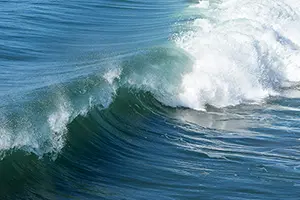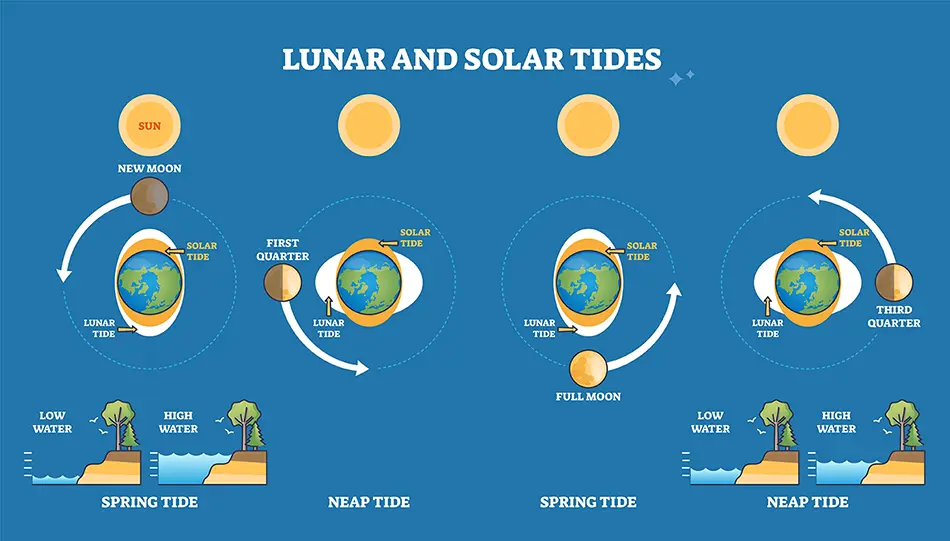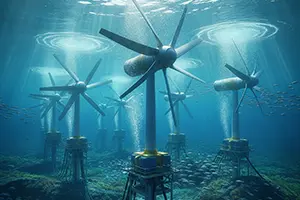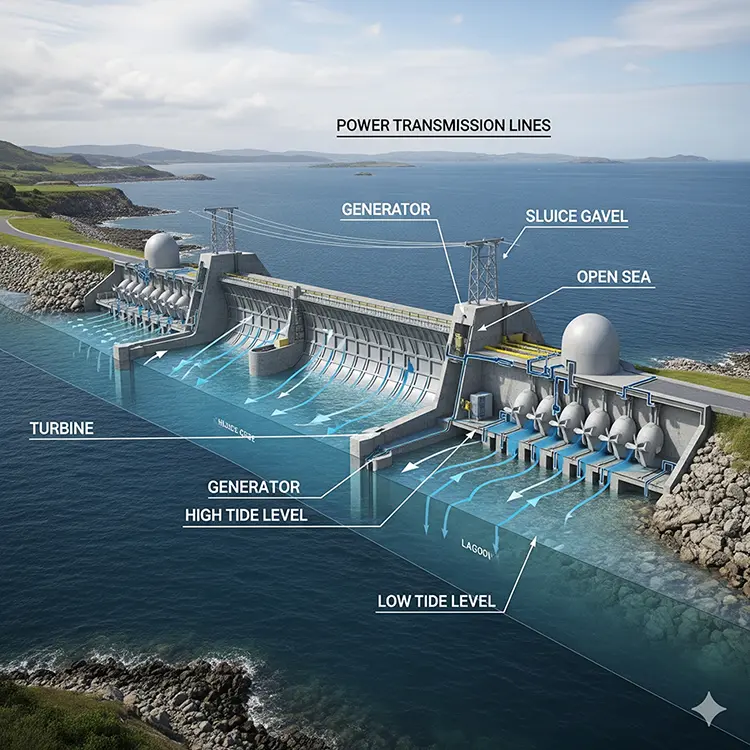
The Basics
Tides are the rise and fall of sea level caused by the gravitational pull of the Moon and the Sun, combined with Earth’s rotation. But they don’t simply slosh back and forth — they travel as waves across ocean basins, shaped by local water depths, coastlines, and seabed features. This is called dynamic tidal theory.

Moon, Sun & Alignment
- New & Full Moon: Moon, Earth, and Sun align (Syzygy) → Spring tides (higher highs, lower lows).
- First & Third Quarter (Half Moons): Moon at right angles → Neap tides (smaller highs and lows/ smaller range).


Dynamic Tidal Theory in Action
Instead of two static bulges, tides move like rotating waves. Ocean basins act like resonant bowls, bending and steering these waves. Earth’s rotation (Coriolis force) adds a twist, producing rotating systems centered on amphidromic points..
Amphidromic Systems
- Amphidromic Point: A spot in the ocean where the tidal range is almost zero.
- Co-tide Lines: Connect places reaching high tide at the same time.
- Co-range Lines: Connect places with the same tidal range.
- Around an amphidromic point, the tide “spins” once per cycle.

Bay of Fundy (Canada): World’s largest tidal range (up to 16–17 m)
Pentland Firth (Scotland): One of Europe’s fastest tidal currents (>2 m/s)

The Power of Tides
Unlike wind or solar, tides are perfectly predictable years ahead. That makes them a powerful renewable resource.
Technologies
- Tidal Stream Turbines — like underwater wind turbines, placed in fast flows.
- Tidal Range Barrages/Lagoons — using the height difference across a barrier and release it through turbines built into the barrier.

Active Projects (2025)
- MeyGen (Scotland): World’s largest tidal-stream farm (15 MW / 175,000 homes).
- Orbital O2 (Orkney): A 2 MW floating turbine, world’s most powerful.
- Nova Innovation (Shetland/Wales): Expanding with new 6 MW contracts.
- Minesto “Dragon 12” (Faroe Islands): A 1.2 MW tidal kite, grid-connected in 2025.
- La Rance (France): 240 MW barrage operating since 1966.
- Sihwa Lake (South Korea): Largest tidal power plant (254 MW).

